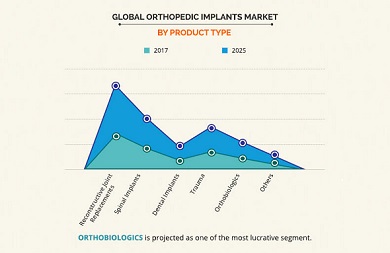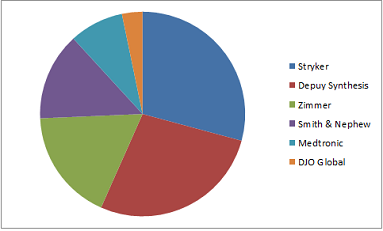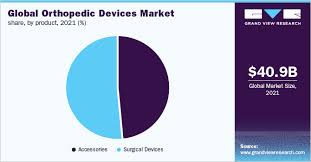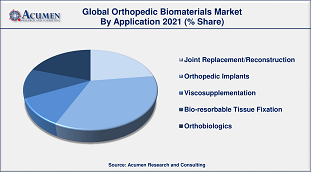About Conference
This global conference aims to comprehensively cover a wide range of topics under the theme of "Orthopedic Surgery includes every facet of Clinical and fundamental research on musculoskeletal problems ." The event will provide a valuable platform for professors, scientists, doctors, surgeons, rheumatologists, and young researchers to exchange the latest innovations, ideas, developments, and future perspectives in the fields of orthopedics, rheumatology, arthritis, and the treatment of various bone-related disorders.
Attending the Orthopedics Congress 2023 offers numerous benefits:
The targeted audience for this conference includes directors and CEOs of organizations, PhD researchers, academic professors, doctors, rheumatologists, medical colleges and universities, training institutes, societies and associations, physicians, business professionals, orthopedic surgeons, researchers, and scientists.
We look forward to your esteemed presence at the International Conference on Orthopedics Congress 2023, where you can contribute to and benefit from this exceptional gathering of orthopedic professionals.
Sessions & Tracks
Session 1: Orthopedics
Orthopedics is a medical specialty that focuses on diagnosing, treating, and preventing disorders and conditions related to the musculoskeletal system. This includes bones, joints, muscles, ligaments, tendons, nerves, and skin. Orthopedic surgeons, or orthopedists, specialize in addressing a wide range of issues such as fractures, joint deformities, sports injuries, arthritis, and spinal disorders. They employ various techniques, including surgery, medication, physical therapy, and rehabilitation, to restore function, alleviate pain, and improve the quality of life for patients of all ages. Orthopedics plays a crucial role in helping individuals regain mobility, overcome injuries, and lead active and fulfilling lives.
Session 2: Rheumatology
Rheumatology is a medical subspecialty focused on the diagnosis and treatment of rheumatic diseases, which encompass a wide range of conditions affecting joints, soft tissues, connective tissues, and autoimmune disorders. Rheumatologists are specialized physicians who work closely with other medical disciplines to provide comprehensive care to patients. Advances in basic science and imaging techniques have contributed to significant progress in rheumatology, including the development of targeted biological drugs. Rheumatological conditions can cause joint pain, inflammation, stiffness, and affect various organs and systems in the body. Prompt diagnosis and appropriate management are essential to improve patient outcomes and enhance their quality of life.
Session 3: Arthritis
Arthritis is the inflammation of one or more joints, causing joint pain and stiffness. Osteoarthritis occurs due to wear and tear on the joints, while rheumatoid arthritis is an autoimmune condition where the immune system attacks the joints. Arthritis can limit mobility and worsen with age. Treatment options include pain management, anti-inflammatory medications, physical therapy, assistive devices, and lifestyle modifications. Early diagnosis and intervention are crucial in managing arthritis and improving quality of life. Consulting with a healthcare professional can help determine the appropriate treatment plan for each individual.
Session 4: Arthroplasty
Arthroplasty, a surgical procedure aimed at restoring joint function, involves resurfacing the bones or replacing them with artificial joints, known as prostheses. It is commonly performed when conservative treatments no longer alleviate joint pain and disability, particularly in cases of severe arthritis or joint degeneration.
During arthroplasty, the damaged joint surfaces are removed and replaced with prosthetic components made of metal, plastic, or ceramic materials. The procedure can be performed on various joints, including the hip, knee, shoulder, and elbow.
Arthroplasty offers several benefits to patients, such as pain relief, improved joint function, and enhanced quality of life. It can restore mobility and enable individuals to engage in daily activities and physical exercise with greater ease.
Recovery following arthroplasty typically involves a comprehensive rehabilitation program involving physical therapy, pain management, and gradual return to normal activities. While complications can occur, such as infection or implant loosening, advancements in surgical techniques and prosthesis design have significantly improved the success rates and longevity of joint replacements.
Arthroplasty has revolutionized the treatment of joint disorders, providing patients with a viable solution to alleviate pain, restore joint function, and regain an active lifestyle.
Session 5: Osteoporosis
Osteoporosis is a condition characterized by weakened and fragile bones, making individuals more susceptible to fractures. It typically develops slowly over time, often without noticeable symptoms until a fracture occurs from a minor fall or impact. Women, especially those who experience early menopause, are at a higher risk of developing osteoporosis. Age-related bone loss is a natural process, but some individuals experience faster bone density reduction. Diagnosis is usually made through bone density tests, and treatment involves lifestyle modifications, including regular exercise, a balanced diet rich in calcium and vitamin D, and sometimes medication to strengthen bones and reduce fracture risk.
Session 6: Sports Medicine
Sports medicine professionals, including doctors and therapists, are trained to provide comprehensive care to athletes and active individuals. They specialize in managing and rehabilitating sports-related injuries, optimizing performance, and promoting safe participation in sports and exercise. Sports medicine incorporates various disciplines such as orthopedics, physical therapy, rehabilitation, and exercise physiology. The goal is to help athletes recover from injuries, prevent future injuries, and enhance athletic performance through personalized treatment plans, exercise programs, and injury prevention strategies.
Session 7: Physiotherapy
Physiotherapy, or physical therapy, is a healthcare profession that aims to help individuals regain movement, function, and overall well-being following injury, illness, or disability. Physiotherapists utilize a range of techniques and interventions such as exercise, manual therapy, education, and advice to address pain, improve mobility, restore strength, and enhance physical performance. They take a holistic approach, considering the patient's specific needs, lifestyle, and goals. By empowering patients to actively participate in their own care, physiotherapy promotes recovery, prevents further injury, and improves quality of life. Physiotherapists play a vital role in rehabilitation, assisting people of all ages in managing conditions and optimizing their health.
Session 8: Rheumatology Emergencies
Rheumatology emergencies encompass critical situations that can arise due to rheumatic diseases or infections. While these emergencies do not typically pose an immediate threat to life, they require prompt and appropriate management. Examples of rheumatology emergencies include catastrophic anti-phospholipid syndrome (cAPS), central nervous system vasculitis, kidney-lung syndrome, neonatal lupus (anti-Ro syndrome), and macrophage activation syndrome (MAS). It is essential for healthcare professionals to have a comprehensive understanding of these conditions and employ critical care interventions, immunosuppression when necessary, and a diagnostic flowchart approach to ensure optimal patient care. Rapid laboratory assessments and the use of anticoagulants may also be essential in specific cases.
Session 9: Spine Disorders
Spine disorders encompass a range of conditions that affect the backbone, or spine, consisting of 26 bone discs called vertebrae. These disorders can arise from various causes such as infections, injuries, tumors, and age-related changes like spinal stenosis and herniated discs. Spinal diseases often result in pain due to pressure on the spinal cord or nerves, leading to limited mobility and movement. Treatment approaches vary depending on the specific disorder and may involve the use of back braces, medication, physical therapy, and in some cases, surgical interventions. Proper diagnosis and management of spine disorders are crucial for alleviating pain and maintaining spinal health.
Session 10: Physical medicine and rehabilitation
Physical medicine and rehabilitation (PM&R) is a medical specialty focused on helping individuals regain lost body functions caused by medical conditions or injuries. It encompasses a wide range of therapies and interventions aimed at improving various aspects of a person's physical well-being, including mobility, speech, cognition, and overall functional abilities. PM&R practitioners work as part of a multidisciplinary team, collaborating with other healthcare professionals to provide comprehensive rehabilitation care. Rehabilitation can take place in different settings, such as hospitals, skilled nursing facilities, or rehabilitation centers, and may begin during hospitalization or before planned surgeries. The goal of PM&R is to enhance quality of life and promote independence through tailored treatment plans and therapies.
Market Analysis
INTRODUCTION:
With an immense pleasure we are welcoming all the peoples in the area of orthopedics to the 8th international World congress on Orthopedics and Surgery 2023 scheduled during October 12-13, 2023 in Osaka,Japan. This global conference is going to cover all the topics with the theme: “Orthopaedic surgery includes every facet of clinical and fundamental research on musculoskeletal problems.”
Orthopedics 2023 will provide the platform to professors, scientists, doctors, surgeons, rheumatologists, young researchers to share the latest innovations, ideas, developments and future perspectives in the field of orthopedics, rheumatology, arthritis and treatment of various bone related disorders.
Market Scenario and Overview:
Global Orthopedic Device Market 2017-2025
The orthopaedic implants market was worth $45,901 million in 2017 and is expected to grow to $66,636 million by 2025, at a CAGR of 4.7% from 2018 to 2025. These implantations are designed to treat deformities, stabilise body posture, and restore normal skeletal function by replacing or supporting a missing or damaged bone or joint. It has seen a shift away from traditional surgical procedures and toward the use of modern fixation and prosthetic devices. The demand for orthopedic implant shas significantly increased.

Figure 1: Orthopedic Market
Based on product type, reconstructive joint replacements accounted for the largest share of the orthopaedic implants industry, which can be attributed to an increase in the prevalence of osteoporosis and osteoarthritis, innovations in joint replacements, and increased investment by key players in orthopaedic implant R&D. At the same time, the orthobiologics segment is expected to grow rapidly during the forecast period due to increased demand for advanced therapies, minimally invasive procedures, and increased patient awareness of the benefits of orthobiologics.Global
Orthopedic Device Market 2018-2022:
The global orthopaedic device market will grow by USD 7.84 billion between 2018 and 2022. This market research report provides a detailed analysis of the market based on application (spine devices, knee devices, extremities devices, hip devices, and CMF devices), product (orthopaedic implants and support devices and orthobiologics), end-users (hospitals, ASCs, and special orthopaedic centres), and geography (the Americas, APAC, and EMEA).
Top orthopedic device companies in the world:
The global orthopaedic device market is highly concentrated to assist clients in increasing their market revenue shares by providing an analysis of the market's competitive landscape and information on the products offered by various leading companies.
The top companies include:
-
DePuy Synthes
-
DJO Global
-
Medtronic
-
Stryker
-
Smith & Nephew
-
Zimmer Biome

Figure 2: Orthopedic Top Device Companies
Global Orthopedic Device Market 2020-2030:
The global orthopaedic devices market was valued at USD 40.9 billion in 2021 and is expected to grow at a compound annual growth rate (CAGR) of 3.1% from 2022 to 2030. The high incidence of orthopaedic disorders, such as degenerative bone disease, as well as the growing ageing population and the rising number of road accidents, all contribute to market growth. Furthermore, the early onset of musculoskeletal disorders, which is primarily caused by a sedentary lifestyle and obesity, is expected to drive market growth. According to data published by the Global Burden of Disease in 2021, musculoskeletal conditions affect approximately 1.71 billion people worldwide. Osteoarthritis, for example, has been identified as the leading cause of chronic disability in the geriatric population over the age of 70. The World Health Organization (WHO) has also designated osteoarthritis as a "priority disease," promoting R&D for therapies to treat osteoarthritis and its associated symptoms. As a result, an increase in musculoskeletal disorders is expected to drive the market from 2022 to 2030.

To learn more about this report, request a free sample copy
Due to a lack of efficient surgical tools, available trauma management techniques cannot currently help restore body parts completely. As a result, manufacturers are investing heavily in research and development to create innovative and efficient devices. This increase in R&D activity is expected to result in rapid market growth in the near future. An increase in the number of other bone-related disorders, as well as technological advancements, are expected to drive the market even further. Obesity is one of the primary risk factors for arthritis. Being overweight or obese increased the risk of knee osteoarthritis (OA) by 2.5 to 4.6 times when compared to being of normal weight, according to studies published in the BMJ Journal in 2020.
The COVID-19 pandemic had a negative impact on the market due to the cancellation of elective procedures, low demand, and poor sales. Companies also faced operational challenges as a result of supply chain disruptions, business closures, travel restrictions, employee illness or quarantines, stay-at-home protocols, and other extended interruptions. Several public health organisations in the United States, for example, have recommended deferring elective surgeries to prevent cross-infection and meet the demand for managing COVID-19 patients.
With the occurrence of COVID-19 decreasing, several regulatory bodies issued guidelines to help safely resume elective surgeries. These include guidelines issued by the American Hospital Association, the American College of Surgeons, the American Society of Anesthesiologists (ASA), and the Association of Perioperative Registered Nurses. Gradual market recovery is expected in the coming years, owing to an increase in the target population, the resumption of elective surgeries, and a backlog of planned surgeries.
Application Insights:
In 2021, the knee orthopaedic devices segment held the largest market share of more than 28.2%. Due to the increasing volume of knee surgeries, this segment is expected to maintain its leading position from 2022 to 2030. However, high costs and longer follow-up periods are significant barriers to segment growth. Furthermore, stringent regulatory guidelines for the approval of class III medical devices are slowing their approval.
From 2022 to 2030, the Sports Medical, Extremities, and Trauma (SET) segment is expected to grow at the fastest rate. A rise in sports and road injuries, combined with increased awareness of treatment options, is expected to drive demand for orthopaedic devices in foot and ankle applications.
The high demand for devices that support immediate cure is expected to drive the introduction of novel products into the orthopaedic device market. Furthermore, organisations working to improve the morale of athletes who have been injured in sports are expected to increase R&D activities in the sports industry.
Report Coverage & Deliverables
PDF report & online dashboard will help you understand:
-
Competitive benchmarking
-
Historical data & forecasts
-
Company revenue shares
-
Regional opportunities
-
Latest trends & dynamics
Product Insights:
The market is divided into two categories: accessories and surgical devices. From 2022 to 2030, the accessories segment is expected to grow at the fastest CAGR of more than 3.0%. The accessories category includes items such as braces, arthroscopes, and other consumables. Sutures, plaster materials, and screws are also included in this category. Drill guides, custom clamps, guide tubes, screwdrivers, and distracters are all subcategories of surgical devices.

To learn more about this report, request a free sample copy
Advances in these devices and tools are expected to drive demand even higher in the near future. Improvements in surgical implant technologies and implant types are expected to drive market growth from 2022 to 2030. Reduced prices for older versions, as a result of the rapid pace of innovation and upgrades, are expected to create significant business opportunities in emerging economies.
Regional Insights:
With the greatest revenue share of more than 46% in 2021, North America dominated the international market for orthopaedic devices. The presence of industry titans, a well-developed healthcare infrastructure, and payment coverage are projected to fuel the area market's high demand for sophisticated healthcare services. The target patient population is continuously growing as a result of ageing and an increase in traffic accidents, which is further boosting the number of orthopaedic surgeries performed in the area. The high frequency of orthopaedic diseases and widespread use of cutting-edge treatment methods are expected to drive market expansion in the United States.
The fastest CAGR is anticipated to be seen in Asia Pacific between 2022 and 2030. The world's two greatest geriatric population pools are predicted to be in China and India. So, it is anticipated that in the near future, demand from these nations will increase dramatically. Additionally, the target patient population is anticipated to be drawn in greater numbers by the burgeoning medical tourism sector as a result of the affordable availability of cutting-edge medical treatments. In comparison to most other nations in its region, Japan has a significant number of implant manufacturers and higher healthcare spending. Further predicted to promote regional market expansion is the rapid adoption of new technology.
Key Companies & Market Share Insights:
The global market is oligopolistic, with a small number of foreign companies controlling more than 80% of the market share. The businesses prioritise product development and providing orthopaedic equipment at affordable pricing, particularly in emerging markets. The number of orthopaedic procedures in both developed and emerging economies is anticipated to increase with the development of minimally invasive orthopaedic devices for one-time procedures.
The market may be positively impacted by new significant developments in the next years, including partnerships, product approvals, acquisitions, and product launches. Adaptix Interbody System, a titanium spinal implant, was introduced by Medtronic PLC in November 2020, as an example. In 2019, Titan Spine, a privately held manufacturer of titanium spine interbody implants and surface technology, was also acquired by Medtronic. These programmes may help the market flourish even further. In the market for orthopaedic devices around the world, some notable companies are:
-
Medtronic PLC
-
Stryker Corporation
-
Zimmer-Biomet Holdings, Inc.
-
DePuy Synthes
-
Smith and Nephew PLC
-
Aesculap Implant Systems, LLC
-
Conmed Corporation
-
Donjoy, Inc.
-
NuVasive, Inc.
Orthopedic Devices Market Report Scope
|
Report Attribute
|
Details
|
|
Market size value in 2020
|
USD 42.2 billion
|
|
Revenue forecast in 2026
|
USD 53.8 billion
|
|
Growth Rate
|
CAGR of 3.1% from 2022 to 2030
|
|
Base year for estimation
|
2021
|
|
Historical data
|
2017 - 2020
|
|
Forecast period
|
2022 - 2030
|
|
Quantitative units
|
Revenue in USD million and CAGR from 2022 to 2030
|
|
Report coverage
|
Revenue forecast, company ranking, competitive landscape, growth factors, and trends
|
|
Segments covered
|
Application, product, region
|
|
Regional scope
|
North America; Europe; Asia Pacific; Latin America; Middle East & Africa
|
|
Country scope
|
U.S.; Canada; Germany; U.K.; France; Italy; Spain; Japan; China; India; Brazil; Mexico; South Africa; Saudi Arabia
|
|
Key companies profiled
|
Medtronic PLC; Stryker Corporation; Zimmer-Biomet Holdings, Inc.; DePuy Synthes; Smith and Nephew PLC; Aesculap Implant Systems, LLC; Conmed Corporation; Donjoy, Inc.; NuVasive, Inc.
|
|
Customization scope
|
Free report customization (equivalent up to 8 analysts working days) with purchase. Addition or alteration to country, regional & segment scope.
|
|
Pricing and purchase options
|
Avail customized purchase options to meet your exact research needs. Explore purchase options
|
Segments Covered in the Report:
In addition to providing an analysis of the most recent market trends in each of the sub-segments from 2017 to 2030, this study also projects revenue growth at the global, regional, and national levels. Grand View Research divided the worldwide orthopaedic devices market report into three categories for this study: product, application, and geography.
-
Application Outlook (Revenue, USD Million, 2017 - 2030)
-
Hip
-
Knee
-
Spine
-
Cranio-Maxillofacial (CMF)
-
Dental
-
Sports Injuries, Extremities and Trauma (SET)
-
Product Outlook (Revenue, USD Million, 2017 - 2030)
-
Accessories
-
Braces
-
Consumables
-
Others
-
Surgical Devices
-
Drill Guide
-
Guide Tubes
-
Implant Holder
-
Custom Clamps
-
Distracters
-
Screw Drivers
-
Others
-
Regional Outlook (Revenue, USD Million, 2017 - 2030)
-
North America
-
Europe
-
U.K.
-
Germany
-
France
-
Italy
-
Spain
-
Asia Pacific
-
Latin America
-
Middle East & Africa
-
South Africa
-
Saudi Arabia
Global Orthopedic Regenerative Surgical Products Market:
In the United States, 78 million persons are expected to have arthritis by 2040, according to the Centers for Disease Control and Prevention (CDC). It is discovered that the frequency is higher in women and rises with age. An additional risk factor for orthopaedic diseases has been found to be obesity. According to the CDC's estimates from 2017 to 2018, 42.4% of Americans were considered obese. Growth in this market is anticipated to be fueled by factors such as the rising prevalence of obesity, geriatrics, and orthopaedic illnesses. Orthopedic regenerative surgical products are used in a variety of illnesses with varying degrees of severity, such as joint discomfort, gout, articular deformities, fibromyalgia, osteoarthritis, trauma, and joint replacement; this is predicted to support market expansion.

According to the Centers for Disease Control and Prevention, 78 million people in the United States are anticipated to develop arthritis by 2040. (CDC). The frequency is seen to increase with ageing and to be higher in women. Obesity has been identified as a further risk factor for orthopaedic conditions. 42.4% of Americans were deemed obese in accordance with CDC estimations for the years 2017 to 2018. The increased incidence of geriatric, orthopaedic, and obesity-related disorders are among the variables that are predicted to fuel market growth. Orthopedic regenerative surgical products are employed in a number of conditions with varied degrees of severity, such as joint discomfort, gout, articular deformities, fibromyalgia, osteoarthritis, trauma, and joint replacement; this is projected to sustain market growth.








